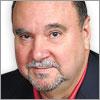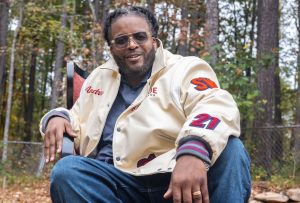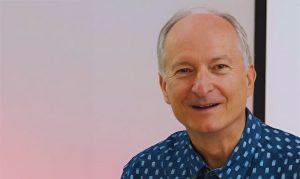The neighbors of Fred Smith on Heartwood Court in Peachtree City probably know him as the soft-spoken, always-smiling man who retired a long time ago.
But if they visited him in his home office, they would see photos on his memory wall reminding that he is Colonel Fred Smith (U.S. Air Force retired), a fighter-bomber pilot who had the right stuff when his country needed him in an unpopular shooting war.
When Fred graduated from West Point as a second lieutenant in 1957, he chose the Air Force, an option open to him since the Air Force Academy’s first class would be in 1959. His dad had been a fighter pilot in World War II and had introduced him to a number of American aviation legends. He decided he wanted to fly fighters.
After multiple stages of Air Force flight schools, Fred served as an Air Defense pilot flying the F-106 Delta Dart missile-armed interceptor jet, capable of flying at Mach 2 and designed to go after enemy bombers. With time after that devoted to graduate school, Fred had 10 years in the Air Force when he was sent to a combat assignment in Vietnam.
On his first Vietnam tour in 1968-69, Fred was part of the 12th TAC Fighter Wing based at Cam Ranh Bay in South Vietnam to fly the F-4C Phantom, the two-seater workhorse fighter-bomber of that war for the Navy, Air Force and Marines. The F-4C was supersonic when it was “clean” without the drag or weight of bombs, capable of Mach 2, twice the speed of sound. They cruised on missions at 350 knots to conserve fuel if they weren’t in a hurry.
Fred’s F-4C mission was “close air support” which meant air-to-ground support of ground combat units in contact with the enemy. “Close” has its own meaning for aircraft commonly known as “fast movers.”
He flew in the front seat with a weapons systems officer in the back to assist. They flew in flights of two aircraft, one usually with either 12 500-pound high explosive bombs, or six 500-lb. high explosive bombs plus a 20mm cannon with 1,000 rounds. The other aircraft typically carried four napalm containers and a 20mm cannon.
War is a nasty business of killing: napalm is a highly flammable mix of petroleum and a thickening sticky jell, an anti-personnel fireball weapon worthy of nightmares, and just one 20mm round impacting nearby would make you scramble for cover faster than you have ever moved. Good thing Fred and his fellow pilots were on our side!
When Fred’s flight was scrambled to assist a friendly ground unit fighting the enemy, they would contact a forward air controller (FAC) in a slow-moving aircraft that could loiter on-station a long time to coordinate helicopter troop insertions, gunships, medevacs, fast-mover bombers and any other air assets. The FAC would provide a sit-rep (situation report) and direct where he wanted ordnance dropped by marking a point with a Willy Pete (white phosphorous) rocket, then he would adjust the drops on each pass.
The F-4C with HE hard bombs would roll into a diving run at 8,000 feet, release one or two bombs at about 5,000 feet at 520 knots, bottom out at 3,000 feet with seven to eight Gs of force, and go around to do it again, varying the approach direction to keep the enemy off balance, jinking left and right after release to be harder to hit.
Meanwhile, the F-4C with napalm bombs would make a pass at 200 feet to drop them low. Both aircraft also used their 20mm cannon for strafing, and of course every enemy nearby would take shots at them, hoping for the lucky shot that brought down an American fighter-bomber.
On one mission they were assisting an American Special Forces unit under siege. That meant just a few Americans directing indigenous troops out in the boonies a long way from reinforcement and in danger of being overrun by bad guys.
Fred was watching his wingman on his bombing run below when one of those lucky enemy shots detonated a 500-lb. bomb still attached under the wing. As Fred saw the explosion tear the aircraft apart and send it spinning to the ground, he barely had time to exclaim, “Oh my God!” before seeing two parachutes.
Quickly, after he made Mayday radio calls, Fred says it seemed like every Army helicopter in the vicinity diverted to help, and the Special Forces unit formed a rescue operation to get the badly injured pilots out of the trees. Fred says it was a breathtaking example of how we all covered and fought for each other in that war. That the crew survived the explosion at all and were then able to punch out was miraculous.
Night missions were tricky. Pilots like Fred called night flying the “milk bowl” because the two million candlepower flares, dropped to light up the area so they could see the target, reflected off the dense humidity to create a milky soup to look through, especially in rainy season. The light played havoc with orientation so a pilot with vertigo relied on his back-seater on instruments to keep them from flying into the ground.
The F-4C could stay in the air two hours under normal conditions. Even so, some missions pressed the limit, like the one flying far south near the delta, each carrying six pods of 2.75-inch rockets to support Special Forces in trouble. Without nose cones on the pods the drag was tremendous, eating up fuel.
By the time Fred arrived they were close to bingo on fuel and told the FAC they could make only one run so mark it accordingly. With his wingman staggered about 500 yards to his right, they attacked the large enemy position and salvoed all rockets at once, a little risky since the jet intake sometimes inhaled the clips that popped loose to release the rocket fins. The FAC was ecstatic that Fred and his wingman got a bunch of the bad guys and gave our troops the upper hand in their fight.
One unusual mission was trying to interrupt the enemy’s incursion after their huge enemy buildup near the Ho Chi Minh Trail just across the Cambodian border. Fred’s aircraft was loaded with metal-triggered mines instead of bombs, and he was to fly over the shallow river on the border straight and level at 540 knots and just 50 feet of altitude.
When he punched off the mines, the intervalometer released two mines per second until the last one, whereupon Fred immediately pulled up, jinked hard and looked behind to see the high splashes of enemy 37mm rounds trying to hit him, but the gunner was about two rings behind on his circular sight. Lucky Fred was moving so fast since just one of those rounds could have torn him and his aircraft apart.
Fred’s second Vietnam tour was in 1972, flying the improved model F-4E out of Korat, Thailand on bombing missions over North Vietnam. Many people don’t know that North Vietnam had the heaviest air defenses in the world at the time, including AAA (anti-aircraft artillery) flak, many SAM missile sites and a number of Russian-made Mig jet fighters.
Distances were a factor bombing in North Vietnam due to limited fuel capacity. Fred told me about the unsung heroes of that part of the war, the tanker crews that stayed on station many hours to air refuel flights inbound to their target.
Fred recalls being Mission Force Commander of one flight of 20 F-4Es, and with the strict discipline of radio silence to keep the element of surprise, they encountered a cell of five tankers a mile apart and stacked up 500 feet each for separation. Four F-4Es lined up behind each tanker, one drinking fuel at a time, an impressive example of coordination without a word spoken on the air. Our tankers had boundaries they could not cross for their own safety, but they did routinely violate those rules, risking their necks when friendly pilots were in trouble with low fuel.
The F-4Es cruised in at 480 knots, pushing up to 540 knots at the IP (initial point), started their bombing runs high at about 19,000 feet, released six 500-lb. or 750-lb. bombs at about 12,000 feet at 600 knots and bottomed out at 8,000 feet, then did a lot of jinking to be harder to hit. Higher altitudes were more forgiving in the north since a miss didn’t have the same consequence as bombing close to our own ground troops.
Flights over North Vietnam involved the extra tension of constant watch for surface-to-air missile (SAM) launch. SAM missiles were like a telephone pole rocket with fins, about that size, radar guided to detonate just close enough to bring airplanes down with shrapnel. When a pilot saw the ground flare and smoke of a launch, and heard the signal from his instruments telling him radar had locked onto him, it was a tense game of putting the SAM on a wing, letting the SAM get close enough before jinking to turn hard into the SAM with all the Gs the airplane could stand, then the SAM couldn’t match the inside turn and would miss. Sweaty work!
Fred remembers an intense period of doubling up on missions flown. While protestors in America told the country we were the aggressor in this war, that the North and South should be left alone to peacefully reunite, North Vietnam massed 14 divisions on the DMZ and the Laotian border with South Vietnam. The North invaded in massive force on Easter weekend of 1972.
All American ground troops were gone by that time, and defenses were by South Vietnamese troops with American artillery and air support. The South Vietnamese ARVN, inept in the early years of the war, did a credible job repelling the huge invasion with the support of pilots like Col. Fred Smith.
During this fight, for the first time in the war, American pilots were permitted to mine the Haiphong Harbor and hit enemy targets that really hurt them. Finally, a president was getting serious about fighting the war. After the Linebacker II campaign, peace talks resumed, and two months later our POW’s came home.
For his service in Vietnam, Fred received the Distinguished Flying Cross twice and a number of other awards. He also had other Air Force assignments after Vietnam, but these combat missions were the ones requiring him to bet his life to do his job.
Our youth would do well to take note of veterans like Col. Fred Smith, take measure of themselves and quietly ask, “What will I contribute to my country?”
[Terry Garlock of Peachtree City occasionally contributes a column to The Citizen. His email is [email protected].]












Leave a Comment
You must be logged in to post a comment.